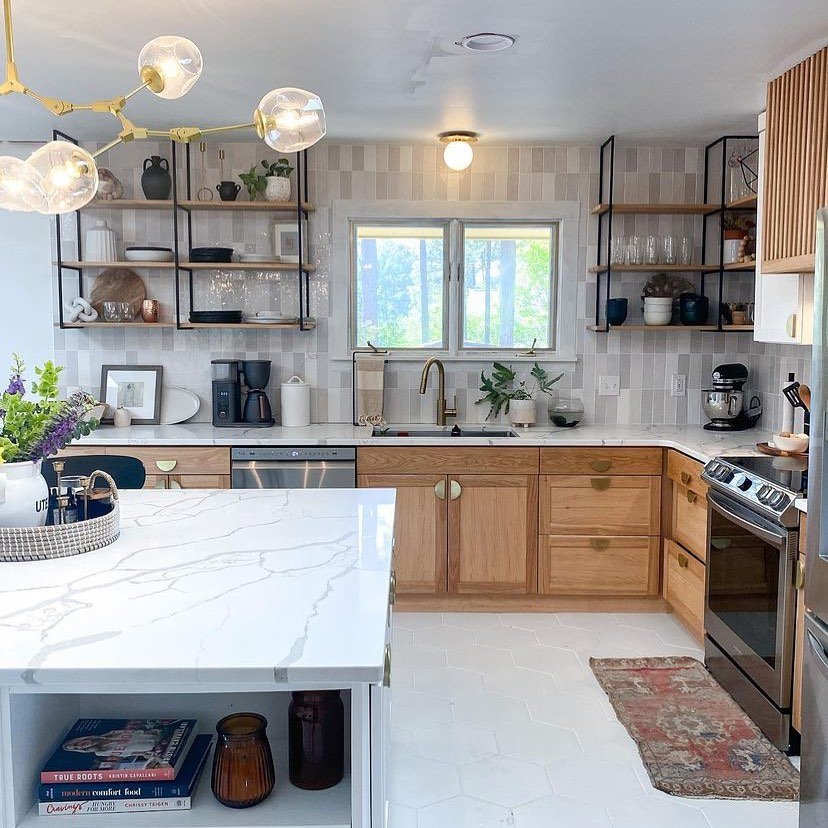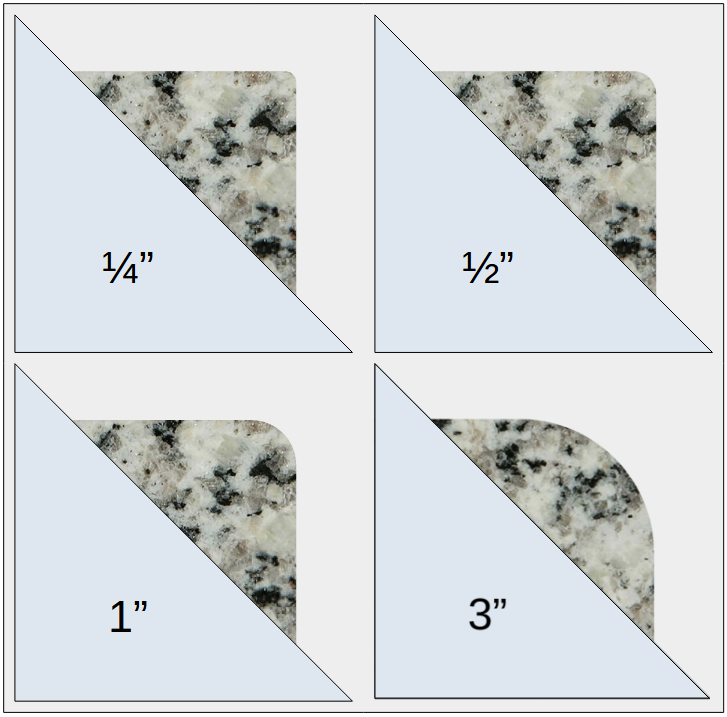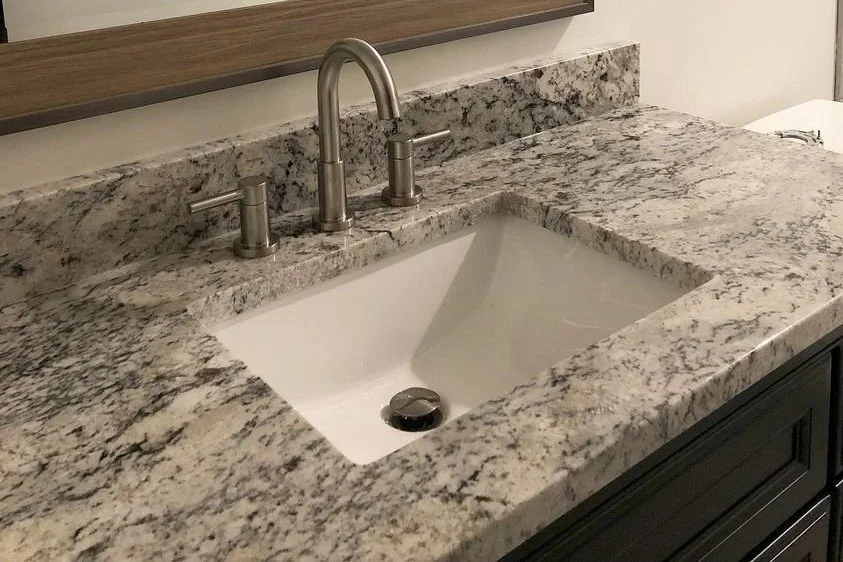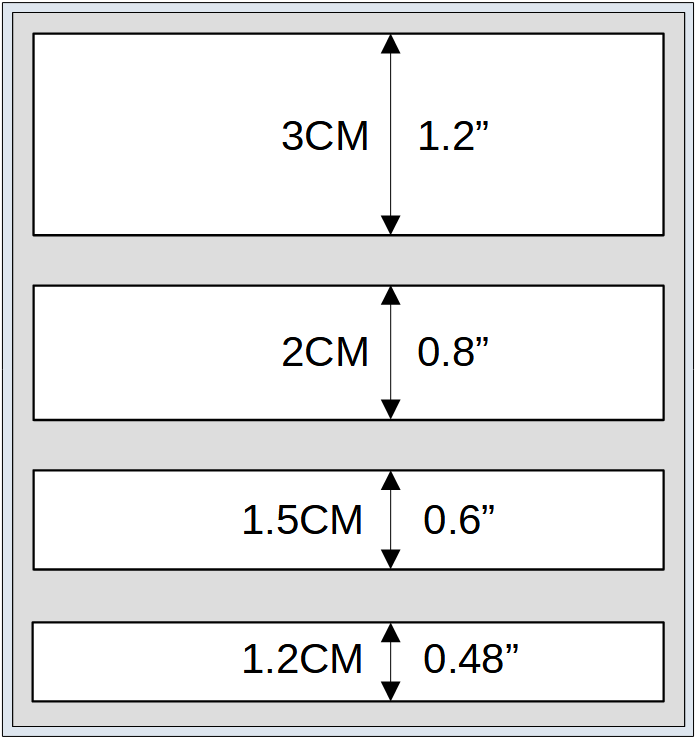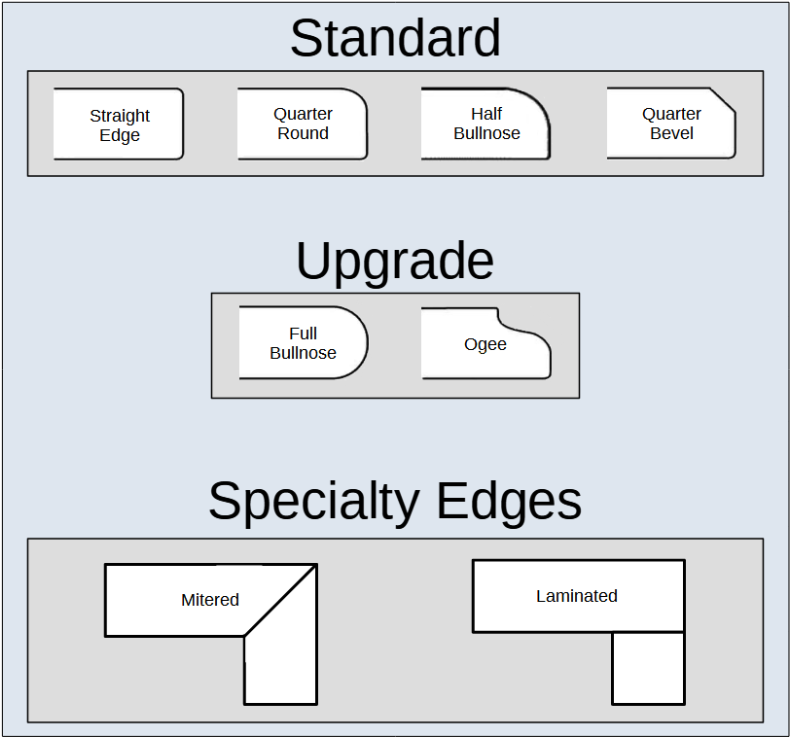Do You Need Countertop Supports?
When it comes to extended countertop overhangs—like those on islands, peninsulas, or bar tops—proper support is key to both safety and long-term durability.
When it comes to extended countertop overhangs—like those on islands, peninsulas, or bar tops—proper support is key to both safety and long-term durability. At World Stone, we help customers determine when and where supports are needed and offer stylish, functional solutions to get the job done right.
When Are Supports Needed?
Overhangs up to 10 inches:
Supports are strongly recommended, especially with heavier materials like granite or quartz. While it may appear stable, unsupported weight over time can lead to cracks, sagging, or cabinet stress.Overhangs over 12 inches:
Supports are required. At this length, the stone cannot safely support its own weight and must be reinforced with brackets or corbels to meet both safety standards and manufacturer guidelines.
Support Options We Offer
Wooden Corbels
Corbels offer both support and style. Available in various shapes and finishes, wooden corbels are ideal for traditional or farmhouse-style spaces. They add a decorative touch while giving your countertop the strength it needs.
Metal Brackets
World Stone offers custom-made metal support brackets for a clean, modern look. They are engineered for strength without drawing attention—especially useful when you want the stone to be the star. These low-profile supports are perfect for:
Kitchen islands
Floating bar tops
Wall-mounted countertops or desks
Open shelving or floating shelves
How many supports do you need?
Countertop brackets are generally spaced 18 - 24 inches apart
Bracket spacing starts 4 - 6 inches away from each end
Let’s Keep Your Counters Safe and Stunning
Proper support isn’t just about code compliance—it’s about protecting your investment. Contact us to discuss your layout or to request a quote on custom bracket solutions.
Stone Selection: Stock Colors & Special Order Options
We offer a curated selection of in-stock stone colors, along with access to an even wider range of materials from our trusted supplier network.
At World Stone, we understand that choosing the right countertop material is one of the most important parts of your project. That’s why we offer a curated selection of in-stock stone colors, along with access to an even wider range of materials from our trusted supplier network.
Our In-Stock Colors
We keep a variety of the most popular granite, marble, and quartz colors in stock. These selections are based on current design trends, durability, and what our customers love most.
Because we stock these materials onsite and use them frequently, we’re able to offer:
Faster lead times
Better pricing
Consistent availability
Our in-stock colors represent the best balance of beauty, value, and convenience.
Special Order Materials
Looking for something unique or specific to your vision? No problem. World Stone works closely with all major stone suppliers and can special order any material they carry. Whether you have your eye on a rare quartzite, a bold marble, or a custom quartz color, we can help you find it.
Please note:
Special order stones are typically more expensive
They may require longer lead times due to shipping and availability
In some cases, you may need to visit a local distributor to view slabs in person
We’re happy to guide you through the process and make sure your selection meets your design goals and project timeline.
Explore More Stone Options
Here are a few of our trusted vendors where you can browse additional colors and materials:
Not sure where to start? Let your World Stone representative know what style or color family you’re drawn to, and we’ll point you in the right direction.
Whether you choose from our in-stock collection or something custom-ordered, we’re here to help you find the perfect stone for your space.
Understanding Countertop Overhangs
Overhangs are a key detail that affect both style and function. An overhang is the portion of the countertop that extends beyond the face of the cabinets.
When planning your countertops, overhangs are a key detail that affect both style and function. An overhang is the portion of the countertop that extends beyond the face of the cabinets—providing visual balance, comfort, and often a bit of extra workspace.
Standard Overhangs
1½-Inch Overhang (Standard):
This is the most common overhang for kitchen countertops. It provides a clean look and slight coverage of the cabinet face while helping to catch crumbs and spills before they reach your cabinetry.1-Inch Overhang:
Popular in modern kitchens and apartment complexes, this minimal look creates a slim, streamlined feel. It works well in tight spaces or where a minimalist design is preferred.
Island & Peninsula Overhangs
2-Inch Overhang:
Islands and peninsulas often receive a slightly deeper overhang to create symmetry, allow for trim around the kneewalls, and increase counter space.Bar Overhangs (10–12 Inches):
When seating is incorporated, such as a breakfast bar or island seating area, the overhang is usually extended to 10 to 12 inches. This provides adequate knee space and comfort for people sitting at the counter.
Note: For any overhang greater than 10 inches, we strongly recommend using supports such as corbels or steel brackets to maintain stability and prevent sagging over time.
Your Selections: Customizing the Details of Your Countertops
Countertop projects are built on great communication and thoughtful choices. Here’s a breakdown of what you’ll choose and how we’ll guide you through it.
Click here to download our Selections Sheet PDF
At World Stone, countertop projects are built on great communication and thoughtful choices. That’s why every customer goes through the selections process—ensuring no detail is overlooked and your finished product reflects your exact needs and style.
Here’s a breakdown of what you’ll choose and how we’ll guide you through it:
Project & Contact Info
We start with the basics—your name, address, and who’s involved in the project (homeowner, builder, or designer). This ensures all communication is clear and timely from day one.
Room Details
You’ll tell us which rooms will receive countertops—like the kitchen, bathroom(s), laundry room, or bar. Each space can have unique needs, and we plan accordingly.
Stone Color & Material
Visit our showroom or check our Products Page to pick from our selection of beautiful granite, marble, or quartz. Or check out options from our major suppliers. You can mix and match colors across different rooms to suit the function and style of each space.
Backsplash Height
You decide how much backsplash (if any) you'd like—common options include a standard 4-inch backsplash, full-height, or a completely clean wall for tile.
Faucet Spread
For any sink installations, we’ll record your faucet configuration (typically 4", 8", or single-hole). This allows us to drill precise holes in advance for easy installation later.
Sink Selection & Cooktop Models
We offer a variety of sink options—from single bowls to 60/40 or 50/50 splits, as well as oval or rectangular vanities. You’ll check off what works for your space. If you already have your sinks or cooktops selected, we’ll take down those model numbers. This ensures cutouts are accurate and everything fits perfectly at install.
Edge Profile
Choose from a range of edge styles—like Straight, Quarter Round, Half Bullnose, Ogee, and more. These choices influence both the look and feel of your countertops.
Surface Finish
Would you like polished, leathered, or honed? Most material is only available in polished, but we’ll explain the pros and cons of each so you can pick the perfect finish for your home’s style and daily use.
Overhang & Radius
We’ll help you select the right overhangs, determine need for any supports, and define the corner radius (how rounded the corners are). This is especially important for islands, bar tops, or child-friendly homes.
Additional Notes
Anything unique? Whether you have special design requests, timing needs, or accessibility concerns—there’s space for that too.
Signature and customer expectations
Finally, you review everything and sign off—ensuring we’re aligned before we move to the precise laser measurement and fabrication stage. Please also take time to review our Customer Expectations
Your Selections = Your Style
This design process is all about you. Our job is to guide and advise, but ultimately, you make the calls on what design works best for your home. With our expert team, you can be confident that every box checked brings you one step closer to a countertop you’ll love.
Corner Radius
Corner Radius refers to the shape of the corners where two edges meet. At World Stone, we offer a range of corner radius options to match your style, layout, and how your space is used.
What Is a Corner Radius?
Corner Radius refers to the shape of the corners where two edges meet—usually the outer points of islands, peninsulas, or exposed ends. A square (90°) corner has no rounding, while a 1" or 3" radius curves the corner to soften its appearance and make it safer in high-traffic areas.
How it’s measured:
The radius is the distance from the tip of the corner (where two edges meet) to where the curve starts. A 1" radius curves away from the corner by 1 inch on both sides, creating a smooth quarter-circle. The larger the radius, the more rounded the corner looks.
Standard Radius Options
At World Stone, we offer a range of corner radius options to match your style, layout, and how your space is used.
¼” Radius:
A very subtle rounding that takes the sharp edge off without changing the overall square appearance. This option is ideal when you want a crisp, modern look with a touch of safety and comfort.½” Radius:
Slightly more noticeable than the soft corner, this size adds a gentle curve without making the corner feel overly rounded. It’s a great compromise between form and function.1” Radius (Standard):
This is our go-to for overhangs of 1½” inches or more, offering a clean, rounded look that blends style with safety. It’s large enough to soften the corner visually and physically, yet still maintains a refined aesthetic.3” Radius:
A bolder, sweeping curve that’s ideal for extended overhangs on islands or bar tops. It not only enhances comfort but also adds a casual, welcoming feel to open kitchen layouts.Square (90°):
Typically used where countertops meet walls, appliances, or backsplashes, this option has no rounding at all. While clean and sharp, it’s best reserved for corners that are tucked away from foot traffic.Custom Radius:
Looking for something unique? We can create custom corner curves tailored to your specific preferences or space constraints. Just let us know what you envision, and we’ll make it happen.
Polished, Leathered, and Honed Finishes: What’s the Difference?
A few materials are available in different surface finishes. Your countertop's finish affects both the look and feel of your space. Polished is the standard option. Leathered (matte) and Honed are the occasional alternatives. Here’s a breakdown
A few materials are available in different surface finishes. Your countertop's finish affects both the look and feel of your space. Polished is the standard option. Leathered (Matte) and Honed are the occasional alternatives. Here’s a breakdown:
Polished Finish
Appearance: Glossy and reflective
Best For: Traditional, modern, or high-end looks
Pros: Enhances color and pattern, easy to wipe clean
Cons: Shows smudges and fingerprints more easily
Leathered Finish (Matte)
Appearance: Soft, flat look with subtle texture
Best For: Rustic, industrial, or contemporary spaces
Pros: Hides fingerprints well, tactile surface
Cons: Can require more regular cleaning to maintain its muted luster
Honed Finish
Appearance: Smooth, satin-like surface with minimal shine
Best For: Casual, natural aesthetics
Pros: Low glare, soft look
Cons: Can show water spots more readily, may need sealing
Each finish has its place depending on your design goals and daily habits. Need help deciding? Stop by our showroom to see each finish in person.
Stone Thickness
Stone countertops come in a variety of thicknesses, to suit specific uses and budgets.
Stone countertops come in a variety of thicknesses, to suit specific uses and budgets.
3CM is the standard and most widely available thickness for all stone types, offering maximum durability and a traditional look.
2CM, 1.5CM, and 1.2CM quartz has a sleek, modern look.
Natural stones like granite, marble, and quartzite are not commonly found in the thinner sizes—most are only offered in 3CM, with only a few exceptions available in 2CM.
Edge Profiles
Edge profiles on stone countertops refer to the shape and finish of the countertop’s edges. They not only affect the overall look but also add a touch of style and personality to your kitchen or bathroom.
Edge profiles on stone countertops refer to the shape and finish of the countertop’s edges. They not only affect the overall look but also add a touch of style and personality to your kitchen or bathroom.
Standard edge profiles like Straight Edge, Quarter Round, Half Bullnose, and Quarter Bevel offer clean, simple lines that work well in most designs.
Upgraded edge profiles, such as Full Bullnose and Ogee, provide more decorative options for a more elegant or traditional appearance.
Two additional edge profiles are available that increase the edge thickness by using more material. Mitered edges are another option, where the countertop edge is cut at an angle and joined with another piece for a thick, modern appearance. Laminate edges—created by stacking two pieces of stone—make the edge appear thicker and more substantial.
Countertop aprons are vertical sections of stone or other material that drop down from the edge of the countertop, typically to cover the front face of a cabinet or support structure. They add a finished look and can help hide structural elements like supports or framing underneath. We offer a mitered edge apron and a stacked edge apron (laminated edge style).
Not all edge options are available with all stone types or stone thicknesses. Please check with your World Stone representative on edge profile availability.
For a visual aid, check out MSI’s Countertop Edge Visualizer Tool
Faucet Hole Spreads
Faucet hole spreads refer to the distance between the mounting holes on a countertop or sink, which determines what type of faucet will fit. Choosing the right spread ensures your faucet fits securely and complements your design.
Faucet hole spreads refer to the distance between the mounting holes on a countertop or sink, which determines what type of faucet will fit. Choosing the right spread ensures your faucet fits securely and complements your design.
A single-hole spread is designed for faucets that combine spout and handles in one unit, offering a clean, minimalist look.
A 4-inch spread, often called a centerset, typically accommodates faucets with a base that combines spout and handles, or with separate handles mounted close together.
An 8-inch spread, or widespread, fits faucets with individual hot and cold handles placed further apart, offering a more upscale, traditional appearance.
In addition to the main faucet holes, extra holes can be added for accessories like soap dispensers or air switches for garbage disposals, adding both functionality and convenience to your countertop setup.
Downloadable Resources:
World Stone Customer Expectations
Selections Sheet
Quote Form
Countertop Layouts






